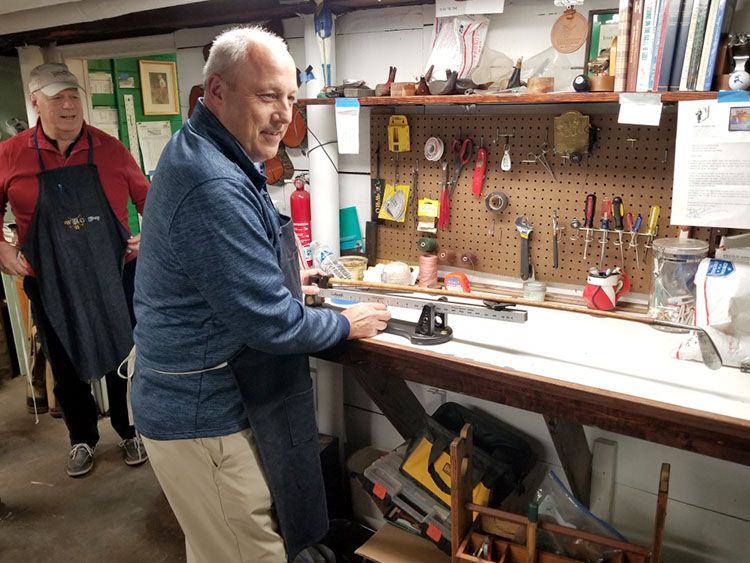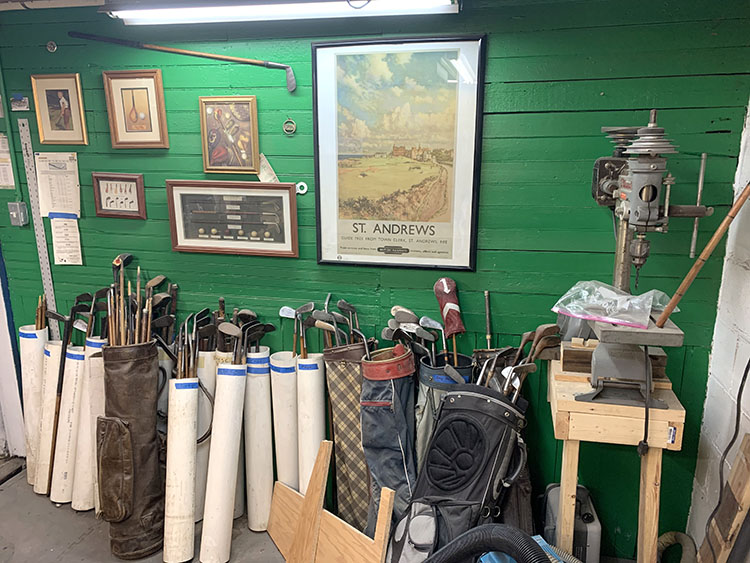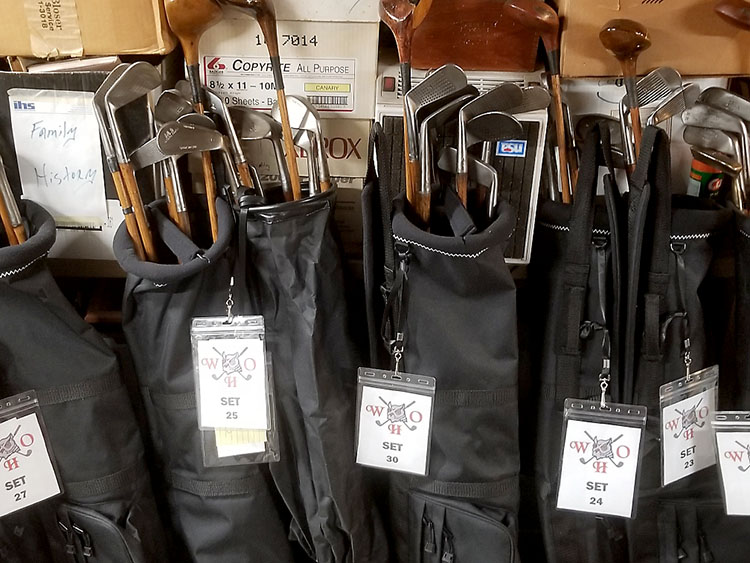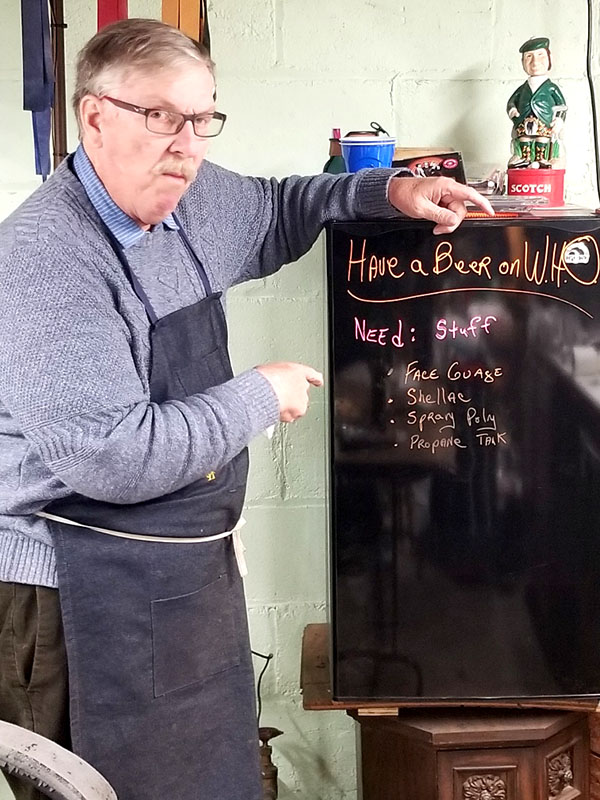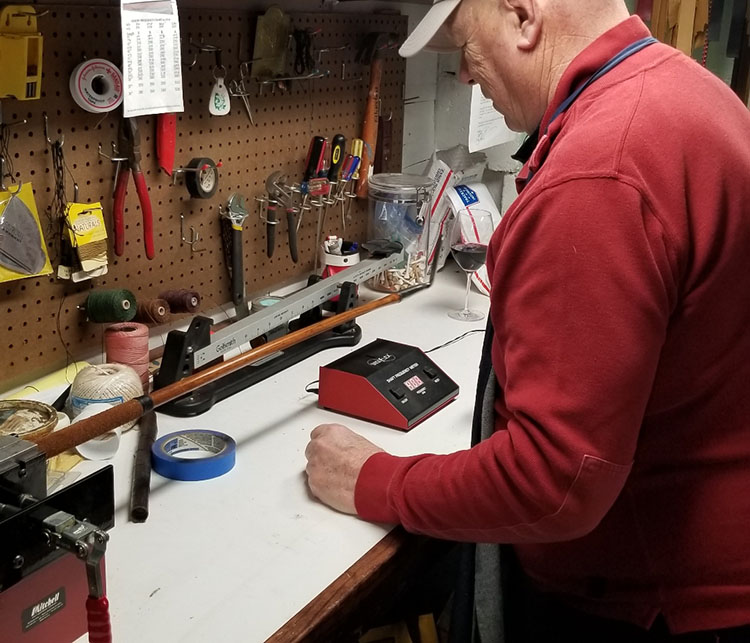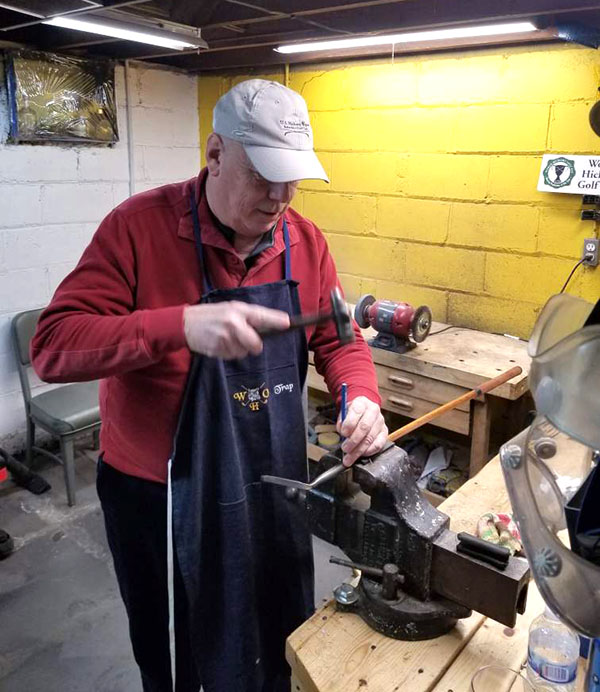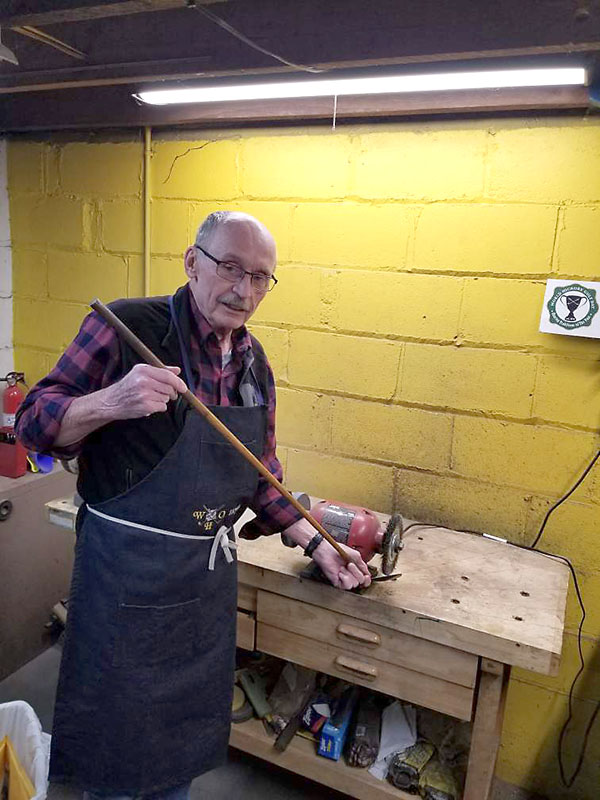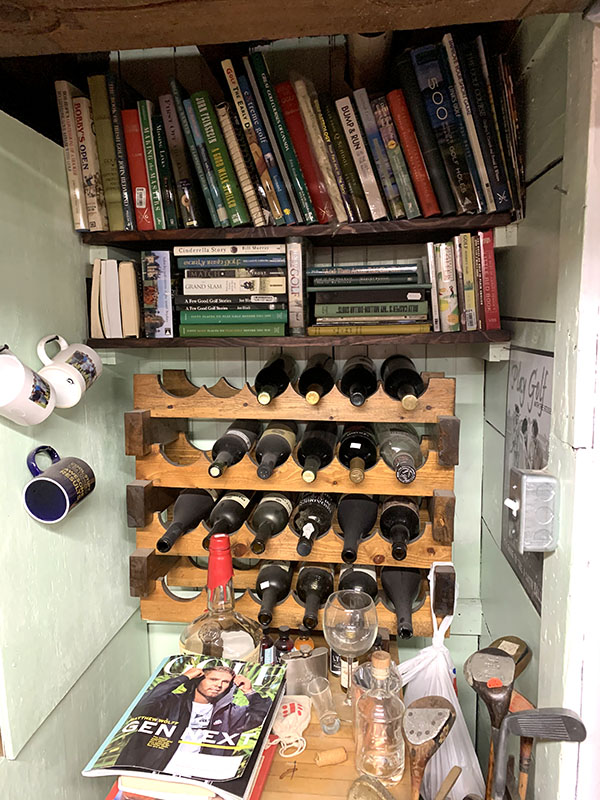March 2021
By Jim Davis
Modern hickory golf can be enjoyed on so many levels – playing the game; exploring the history and background of golf from the hickory club era; even donning some period clothing for a little extra hickory sauce. Then there are the clubs, which require a little more TLC than your modern high-tech gear, especially the original clubs which are discovered in all manner of condition from rusty waste to ready-to-play.
Fortunately, there is no dearth of hobbyists and craftspeople who enjoy bringing suitable original clubs back to life. Whether for display or for the course, there is a satisfaction in restoring an old club to a luster reminiscent of its earlier days. There is the double satisfaction, too, of taking to the course a club, or clubs, that one has personally restored; perhaps with attention to such fine-tuning as swing weight, loft, lie and so forth. The rewards of such attention pay off in a club that looks and “feels” right and produces well-struck shots.
While a lot of this work is carried on individually, there are some who enjoy the camaraderie of a group effort. Perhaps none more so than the gentlemen of the Wyandotte Hickory Organization, affectionally known as the WHO.
Located in Wyandotte, Mich., these fellows, and a few others, have enjoyed a close association of many years, originating from casual weekend sports get-togethers and the subsequent, and far more important, time in the local bar following games. When hickory golf was discovered and the disease communicated to the rest of the group, the formal organization that become the WHO was not long in coming.
“We originally formed the WHO just for screwing around and now we have 125 members,” Ronco says. “Who would have thought?”
After some years of enjoying the sport, traveling to various events, talking with other golfers, creating the WHO, and becoming part of the statewide Michigan Hickory Tour, it was inevitable that some of the group would take to working on clubs. And with the WHO, and its long history of close friendships, it was natural that this, too, would be a group effort.
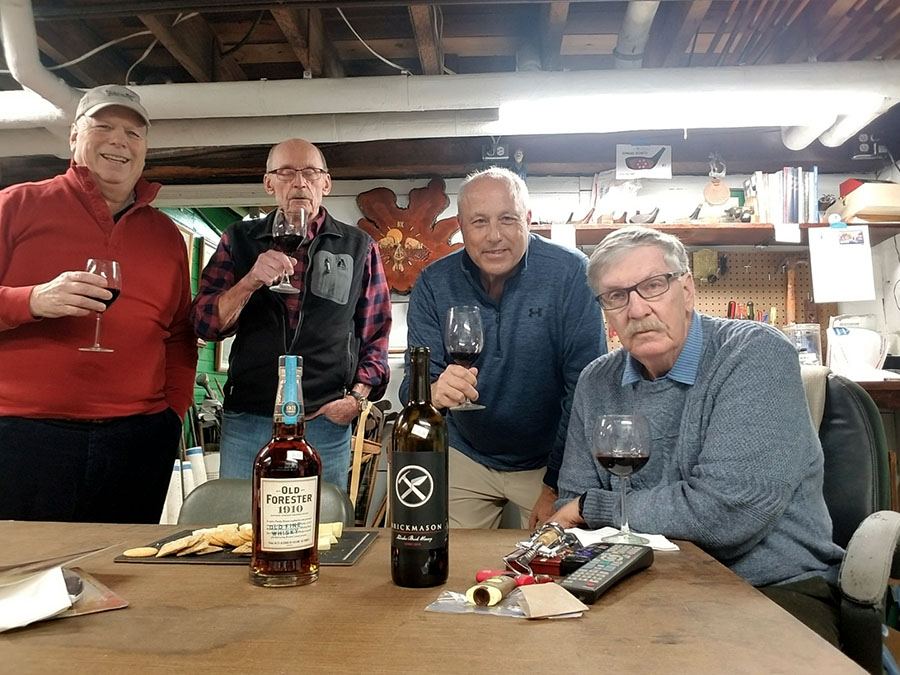
Ronco, a retired school administrator and a past president of the SoHG; Bill Ellington, a physical therapist; Lloyd Slinglend, also a retired school administrator; and Gary Trapani, a retired Ford administrative manager, are the core of the WHO’s workshop team.
“We created a shop in Ed’s basement about 10 years ago, to work on our own clubs and maybe put together another dozen sets to get our friends to play. And all of a sudden we began to acquire more clubs,” Ellington says. “From eBay, flea markets, garage sales, friends of friends – they just kept coming in.”
Weekly, and sometimes more often, the foursome meet in the shop where the work of hickory golf club refurbishment is pursued with an enthusiasm fueled by spiritous liquors and a generous dose of their own good natures and delight in one another’s company.
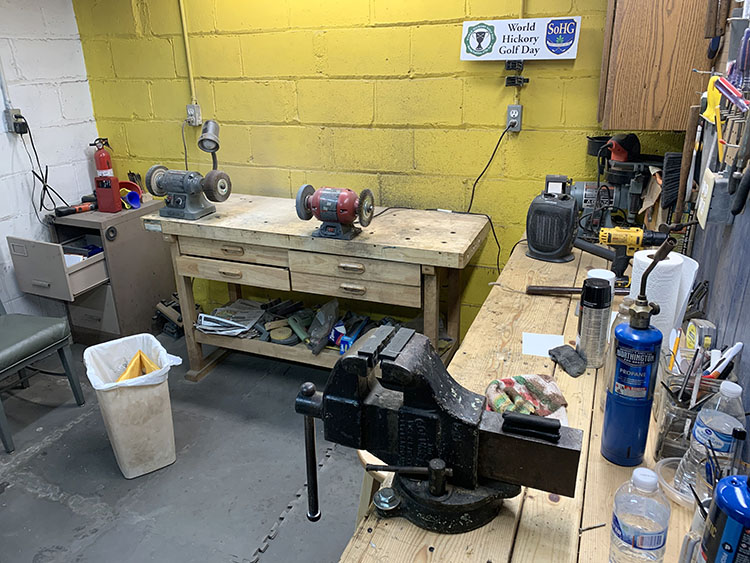
Workshop shelves are laden with various finishes, glues, leathers, threads and other bits, while pegboard walls are lined with tools. Posters, plaques and clubs, including one large poster of Walter Hagen, adorn the cinderblock walls. Books and a well-stocked wine rack are in one cubby. The bench and its vise and grinder display evidence of regular ambition.
Overhead in rafters and stored in various bins about the place, dozens upon dozens of clubs await their call to duty, assuming they pass an initial fitness assessment. Shop aprons and safety eyewear are always at the ready, as are other necessities.
“One or two of us will bring over some wine for the day. If power tools are not involved, we might go to bourbon,” Ronco says.
Despite the occasional tipple, theirs is not a carless or altogether casual industry. They are serious about their work. To date, they have produced some 32 sets of playable, mostly original, hickory clubs, which rest against a wall in numbered black carry bags. This is not a commercial endeavor. The clubs are not available for sale or rent. Their higher mission is to extend the hickory golf experience to as many people as possible.
“We want to have enough to take to outings and let people try them, although we could sell a set or two here and there, as necessary, to help a newcomer get started,” Ellington says.
“We are happy to loan them,” Ronco adds. “We work for beer.”
The clubs are used by local high school golf teams, golf leagues that want a special experience for their players, and private clubs that wish to hold a special outing for their members, celebrate a club anniversary and the like. The clubs may also supplement established events on the Michigan Hickory Tour where a newcomer to the sport may be in need of a play set.
Most of the sets have eight clubs on average, with from one to two woods, and all 32 are in solid, WHO-certified, playable condition, Ronco says. “All the iron club heads have been re-pinned, new grips added, perhaps different shafts, and so forth. Some of these play sets are quite good, above the average common players.”
Ronco, Trapani, Slinglend, and Ellington are equally handy in general aspects of club restoration – re-pinning and cleaning heads, cutting grips, whipping, etc. – but they have found their special niches.
Trapani, for example, has become “weird good at fitting old shafts to different heads,” Ronco says. “He just seems to know how to do it.”
Ellington is the man for retro-fitting wood club heads originally matched to pyratone shafts to hickory shafts, taking care, the while, that such retro-fit adheres to SoHG equipment guidelines, to whit – any club head on a metal shaft, such as pyratone, must have also been available at that time in a wood shaft.
Ronco appears to be the go-to man for whipping and refinishing, enjoying the effort that results in a beautifully restored club. It is said he has a knack for working with lettering on some of the woods, and with new finish and paint.
As for Slinglend – “He is meticulous,” Ellington says, “about everything from loft, lie and weight to proper balance and overall look.” He is the quality control inspector. No club shall find a loaner bag until he says so.
Whether in the workshop or on the local Wyandotte Shores Golf Course where hickory golf is regularly enjoyed on this nine-hole course along the Detroit River, the WHO foursome is a relaxed group thoroughly comfortable with one another, long accustomed to repeated stories, and countless golf expeditions and bar tabs. Their shared affinity for hickory golf and club work provides another opportunity, and excuse, for shared experiences and good company.
It works so well for them, one wonders how other groups might enjoy a shared shop experience. What would the WHO do?
“Don’t be afraid to jump in with both feet,” Ellington says. “We learned from Sonny [Chappie, a close friend and expert club repairman who passed away in 2018] that you can’t make a mistake that can’t be fixed. We discovered that he was at least 90 percent right. Just don’t worry about making mistakes. There is always someone, like Tad Moore, who is only a phone call away and who is willing to help or offer a suggestion.”
“We do have a bag that we call the ‘FUBAR’ section with clubs that will turn out to be nothing more than display items,” Ronco says.
As their club working mistakes grow fewer in number and their fans grow with every tournament they visit, it is a safe bet the WHO and its love of hickory golf will continue to swell the ranks of hickory golfers for years to come.
As they say in Wyandotte, “WHO loves you, baby.”

